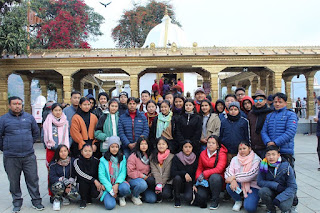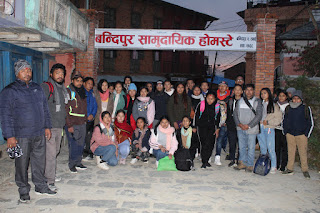Today's world is highly dependent or reliant on computers and the internet than ever before. With the passage of time contemporary technology are being more influential to today's generation. Whether it be businesses, educational institutions, social organizations or government organizations, all need to access to the internet in order to operate the organization efficiently. Contemporary technology is simply the technology occurring or existing at present time period. We can find different contemporary technologies at this time, including transportation, information technology, robotics, virtual reality, Internet of Things and many more.
CLOUD COMPUTING:
Cloud computing is one of the popular contemporary technologies that is being more and more useful to today's generation. It is said to be the on-demand delivery of different IT resources through the internet. We can be more clear about cloud computing through following points:
- Cloud computing means storing and accessing data and information in the remote (far-distance) server instead of our computer's hard drive through the Internet.
- We can get access to any resources such as storage, database, software, etc. from a cloud service provider without making use of our own personal computing device.
- Cloud computing got its name such because the cloud symbol was used to represent Internet in flowcharts and diagrams in the early's 1994.
- Cloud computing enables we users to upload and access file to cloud from anywhere just with the help of any computer with internet connection.
- Cloud computing holds special feature to analyze the storage usage and allows us to get extra cloud storage if needed at any time.
- Cloud computing is believed to have been invented by Joseph Carl Robnett Licklider in the 1960s with his worker on ARPANET to connect people and data from anywhere anytime.
TYPES OF CLOUD COMPUTING:
- Software-as-a-Service (SaaS): The delivery of software applications using the Internet is known as software-as-a service. This service provides us software applications for certain time or even lifetime depending upon the service provider.
- Platform-as-a-Service (PaaS): The delivery of hardware and software tools using the Internet is known as platform-as-a service. This service allows us to develop, manage and run the previously built applications.
- Infrastructure-as-a-Service (IaaS): The delivery of fundamental computing, networking and storage resources using the Internet is known as infrastructure-as-a service. This service helps us to access and monitor things like computing, networking and other services.
- Cost Saving: As data is stored on remote computer, cloud computing saves installation cost of hardware and software. It also provides services to us at the lowest rates.
- Data backup and recovery: It is one of the beneficial features of Cloud. We can easily get backup and data recovery once the data is stored on the cloud.
- Unlimited Storage: Cloud offers us almost unlimited storage capacity. We can easily get extra cloud storage if needed at any time.
- Reliability: Reliability is one of the features of cloud computing. We can immediately be notified and updated about the latest changes.
- Accessibility: We can access the data stored in cloud from different remote places in a convenient and secure manner using cloud computing.
DISADVANTAGES OF CLOUD COMPUTING:
- Internet connectivity issue: We must have constant internet connection in the server computer while using cloud computing otherwise we won't be able to access the resources.
- Security Threat: As we will be sharing our all sensitive information with the cloud service provider, there is a high chance that hackers might access the information.
- Downtime: We must be aware about downtime while working out with cloud computing as the cloud service providers may face power loss, service maintenance, etc.
- Lack of support: We sometimes face a lot of problems when cloud service providers fail to provide proper support to us. They even want us to depend upon FAQs which can be unfavorable for some of us who lack technical skills.
- Technical issues: We are likely to face some technical issues while using cloud computing. Mainly, cloud service providing companies face this problem despite of having good service maintenance.














































